
Rice is a cereal grain and in its domesticated form is the staple food of over half of the world's population, particularly in Asia and Africa. Rice is the seed of the grass species Oryza sativa —or, much less commonly, Oryza glaberrima. Asian rice was domesticated in China some 13,500 to 8,200 years ago; African rice was domesticated in Africa about 3,000 years ago. Rice has become commonplace in many cultures worldwide; in 2021, 787 million tons were produced, placing it fourth after sugarcane, maize, and wheat. Only some 8% of rice is traded internationally. China, India, and Indonesia are the largest consumers of rice. A substantial amount of the rice produced in developing nations is lost after harvest through factors such as poor transport and storage. Rice yields can be reduced by pests including insects, rodents, and birds, as well as by weeds, and by diseases such as rice blast. Traditional rice polycultures such as rice-duck farming, and modern integrated pest management seek to control damage from pests in a sustainable way.

Oryza is a genus of plants in the grass family. It includes the major food crop rice. Members of the genus grow as tall, wetland grasses, growing to 1–2 metres (3–7 ft) tall; the genus includes both annual and perennial species.
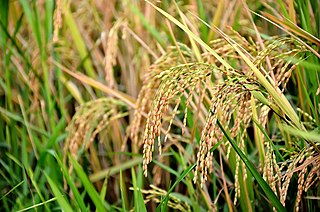
Oryza sativa, having the common name Asian cultivated rice, is the much more common of the two rice species cultivated as a cereal, the other species being O. glaberrima, African rice. It was first domesticated in the Yangtze River basin in China 13,500 to 8,200 years ago.

Basmati is a variety of long, slender-grained aromatic rice which is traditionally grown in the Indian subcontinent, mainly India, and Pakistan, as well as some regions of Sri Lanka and Nepal. As of 2019, India accounted for 65% of the international trade in basmati rice, while Pakistan accounted for the remaining 35%. Many countries use domestically grown basmati rice crops; however, basmati is geographically exclusive to certain districts of India and Pakistan.

The Africa Rice Center (AfricaRice), formerly known as the West Africa Rice Development Association (WARDA), is a pan-African intergovernmental association and a CGIAR Research organization, currently headquartered in Abidjan, Côte d'Ivoire. AfricaRice is an agricultural research center that was constituted in 1971 by 11 West African countries. By 2023, the center counted 28 African member states. Since 1986, AfricaRice has been one of the 15 specialized research centers of CGIAR.

Jasmine rice is a long-grain variety of fragrant rice. Its fragrance, reminiscent of pandan and popcorn, results from the rice plant's natural production of aroma compounds, of which 2-acetyl-1-pyrroline is the most salient. A rapid loss of aromatic intensity leads many Southeast Asians and connoisseurs to prefer each year's freshly harvested "new crop" of jasmine rice. Jasmine rice is a variety of Oryza sativa.
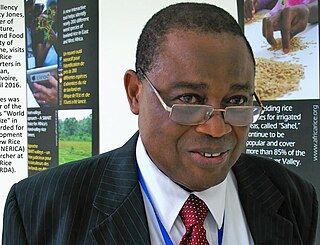
Monty Jones was a Sierra Leonean plant breeder and politician who served as the Minister of Agriculture, Forestry and Food Security.

Broken rice is fragments of rice grains, broken in the field, during drying, during transport, or during milling. Mechanical separators are used to separate the broken grains from the whole grains and sort them by size.

Agriculture is the largest employment sector in Bangladesh, making up 14.2 percent of Bangladesh's GDP in 2017 and employing about 42.7 percent of the workforce. The performance of this sector has an overwhelming impact on major macroeconomic objectives like employment generation, poverty alleviation, human resources development, food security, and other economic and social forces. A plurality of Bangladeshis earn their living from agriculture. Due to a number of factors, Bangladesh's labour-intensive agriculture has achieved steady increases in food grain production despite the often unfavorable weather conditions. These include better flood control and irrigation, a generally more efficient use of fertilisers, as well as the establishment of better distribution and rural credit networks.
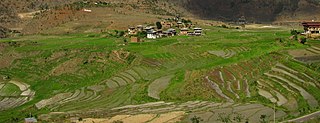
Agriculture in Bhutan has a dominant role in the Bhutan's economy. In 2000, agriculture accounted for 35.9% of GDP of the nation. The share of the agricultural sector in GDP declined from approximately 55% in 1985 to 33% in 2003. Despite this, agriculture remains the primary source of livelihood for the majority of the population. Pastoralism and farming are naturally complementary modes of subsistence in Bhutan.

A crop wild relative (CWR) is a wild plant closely related to a domesticated plant. It may be a wild ancestor of the domesticated (cultivated) plant or another closely related taxon.
Upland rice is rice grown in dry-land environments. The term describes varieties of rice developed for rain-fed or less-intensely irrigated soil instead of flooded rice paddy fields or rice grown outside of paddies.

Oryza glaberrima, commonly known as African rice, is one of the two domesticated rice species. It was first domesticated and grown in West Africa around 3,000 years ago. In agriculture, it has largely been replaced by higher-yielding Asian rice, and the number of varieties grown is declining. It still persists, making up an estimated 20% of rice grown in West Africa. It is now rarely sold in West African markets, having been replaced by Asian strains.

Rice production in China is the amount of rice planted, grown, and harvested for consumption in the mainland of China.

Perennial rice are varieties of long-lived rice that are capable of regrowing season after season without reseeding; they are being developed by plant geneticists at several institutions. Although these varieties are genetically distinct and will be adapted for different climates and cropping systems, their lifespan is so different from other kinds of rice that they are collectively called perennial rice. Perennial rice—like many other perennial plants—can spread by horizontal stems below or just above the surface of the soil but they also reproduce sexually by producing flowers, pollen and seeds. As with any other grain crop, it is the seeds that are harvested and eaten by humans.

Plant breeding is the science of changing the traits of plants in order to produce desired characteristics. It is used to improve the quality of plant products for use by humans and animals. The goals of plant breeding are to produce crop varieties that boast unique and superior traits for a variety of applications. The most frequently addressed agricultural traits are those related to biotic and abiotic stress tolerance, grain or biomass yield, end-use quality characteristics such as taste or the concentrations of specific biological molecules and ease of processing.

Deepwater rice are varieties of rice grown in flooded conditions with water more than 50 cm (20 in) deep for at least a month. More than 100 million people in Southeast Asia including Northeastern India rely on deepwater rice for their sustenance. Two adaptations permit the rice to thrive in deeper water, floating rice and traditional talls. Traditional talls are varieties that are grown at water depths between 50 and 100 cm and have developed to be taller and have longer leaves than standard rice. Floating rice grows in water deeper than 100 cm through advanced elongation ability. This means when a field where rice is growing floods, accelerated growth in the internodal of the stem allows the plant to keep some of its foliage on top of the water. The O. s. indica cultivar is the main type of deepwater rice, although varieties of O. s. japonica have been found in Burma and Assam Plains.
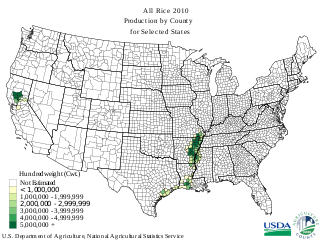
Rice production is the fourth largest among cereals in the United States, after corn, wheat, and sorghum. Of the country's row crop farms, rice farms are the most capital-intensive and have the highest national land rental rate average. In the United States, all rice acreage requires irrigation. In 2000–09, approximately 3.1 million acres in the United States were under rice production; an increase was expected over the next decade, to approximately 3.3 million acres. USA Rice represents rice producers in the six largest rice-producing states of Arkansas, California, Louisiana, Mississippi, Missouri, and Texas.
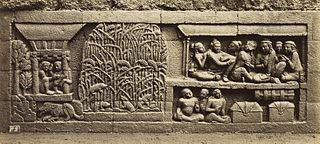
The history of rice cultivation is an interdisciplinary subject that studies archaeological and documentary evidence to explain how rice was first domesticated and cultivated by humans, the spread of cultivation to different regions of the planet, and the technological changes that have impacted cultivation over time.

Arroz de fríjol cabecita negra is a rice-based dish from the Caribbean Coast of Colombia that utilizes black-eyed peas as the legume, differing from other rice dishes that are usually prepared with different legumes such as beans, peas, lentils, and Pigeon peas.





















